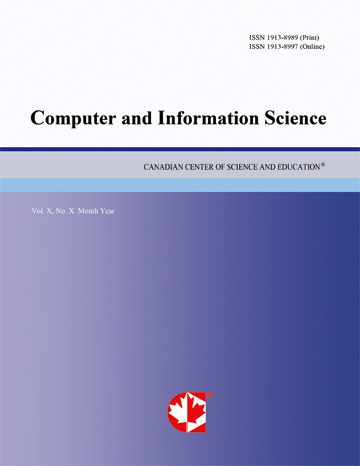Semantic Clustering for Large-Scale Documents.doc
- Ming Liu
Abstract
Along with explosion of information, how to cluster large-scale documents has become more and more important. This paper proposes a novel document clustering algorithm (CLCL) to solve this problem. This algorithm first constructs lexical chains from feature space to reflect different topics which input documents contain, and documents also can be separated into clusters by these lexical chains. However, this separation is too rough. So, idea of self organizing mapping is used to optimize cluster partition. For agglomerating documents with semantic similarities into one cluster, influences from similar features are also considered. Experiments demonstrate that because effects of semantic similarities between different documents are considered, CLCL has better performance than traditional document clustering algorithms.- Full Text:
 PDF
PDF
- DOI:10.5539/cis.v3n1p91
Journal Metrics
WJCI (2022): 0.636
Impact Factor 2022 (by WJCI): 0.419
h-index (January 2024): 43
i10-index (January 2024): 193
h5-index (January 2024): N/A
h5-median(January 2024): N/A
( The data was calculated based on Google Scholar Citations. Click Here to Learn More. )
Index
- BASE (Bielefeld Academic Search Engine)
- CNKI Scholar
- CrossRef
- DBLP (2008-2019)
- EuroPub Database
- Excellence in Research for Australia (ERA)
- Genamics JournalSeek
- GETIT@YALE (Yale University Library)
- Google Scholar
- Harvard Library
- Infotrieve
- Mendeley
- Open policy finder
- ResearchGate
- Scilit
- The Keepers Registry
- UCR Library
- WJCI Report
- WorldCat
Contact
- Chris LeeEditorial Assistant
- cis@ccsenet.org
